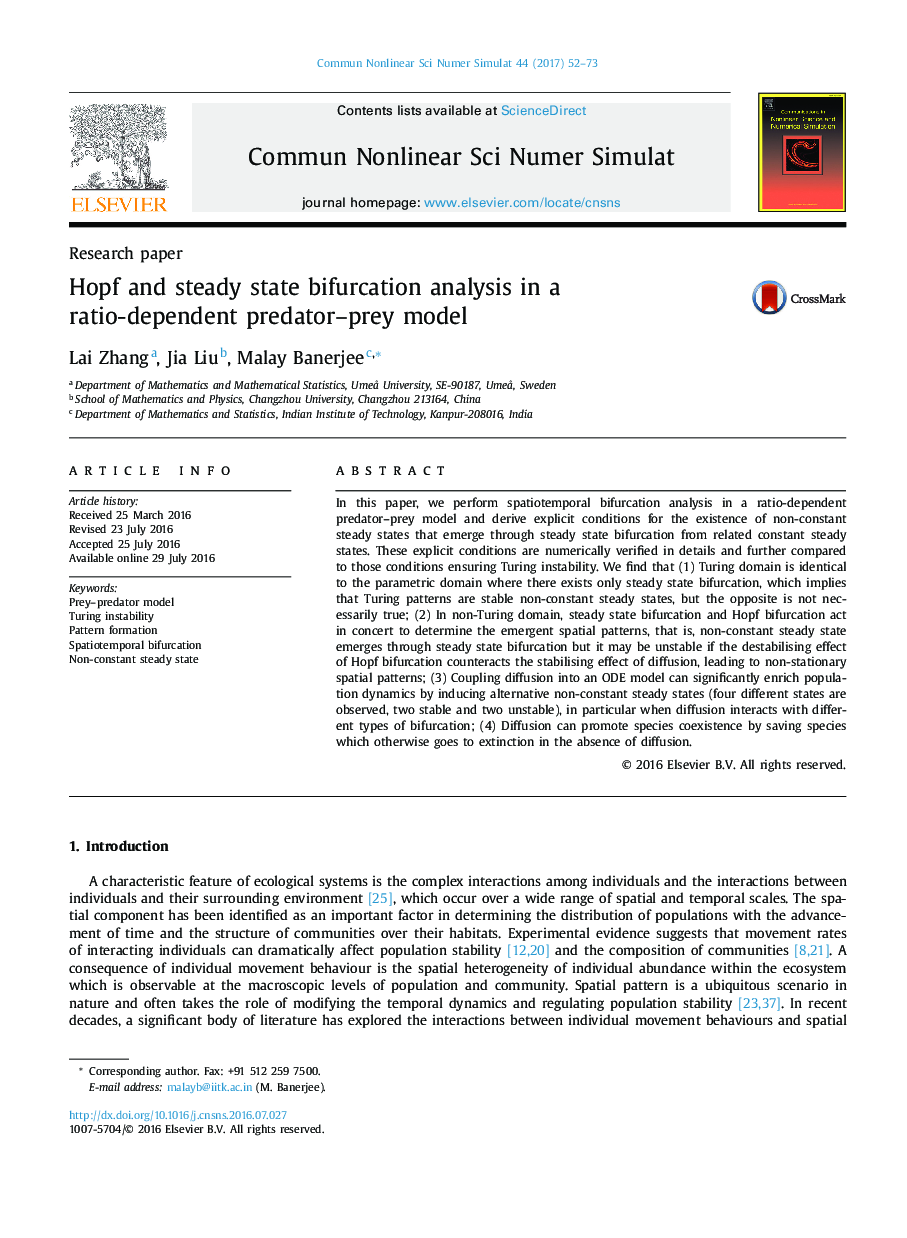| کد مقاله | کد نشریه | سال انتشار | مقاله انگلیسی | نسخه تمام متن |
|---|---|---|---|---|
| 758465 | 1462601 | 2017 | 22 صفحه PDF | دانلود رایگان |
• Spatiotemporal prey–predator model with modified Holling–Tanner formulation is considered.
• Conditions for the existence of non-constant steady states are obtained.
• Stationary Turing patterns are compared with the non-constant steady states.
• Dominant patterns with small and large diffusion rates are obtained.
• Bifurcation of spatiotemporal patterns are demonstrated with numerical results.
In this paper, we perform spatiotemporal bifurcation analysis in a ratio-dependent predator–prey model and derive explicit conditions for the existence of non-constant steady states that emerge through steady state bifurcation from related constant steady states. These explicit conditions are numerically verified in details and further compared to those conditions ensuring Turing instability. We find that (1) Turing domain is identical to the parametric domain where there exists only steady state bifurcation, which implies that Turing patterns are stable non-constant steady states, but the opposite is not necessarily true; (2) In non-Turing domain, steady state bifurcation and Hopf bifurcation act in concert to determine the emergent spatial patterns, that is, non-constant steady state emerges through steady state bifurcation but it may be unstable if the destabilising effect of Hopf bifurcation counteracts the stabilising effect of diffusion, leading to non-stationary spatial patterns; (3) Coupling diffusion into an ODE model can significantly enrich population dynamics by inducing alternative non-constant steady states (four different states are observed, two stable and two unstable), in particular when diffusion interacts with different types of bifurcation; (4) Diffusion can promote species coexistence by saving species which otherwise goes to extinction in the absence of diffusion.
Journal: Communications in Nonlinear Science and Numerical Simulation - Volume 44, March 2017, Pages 52–73
